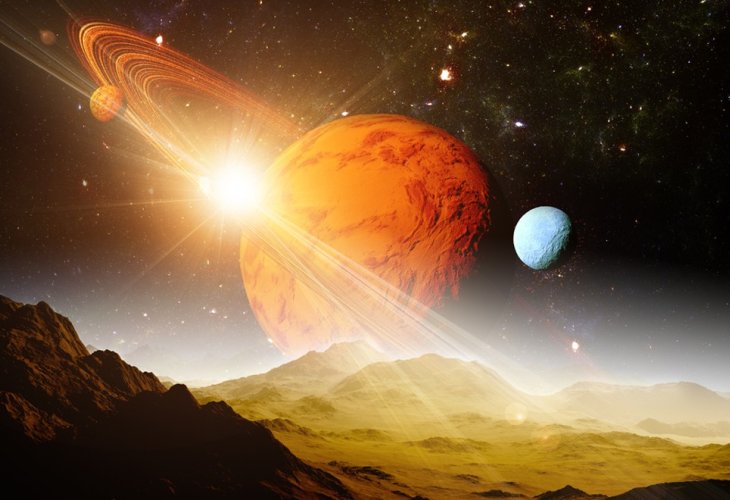Wonders of Creation
The Blue Marble: 7 Astonishing Conditions That Make Earth Unique for Life
Why scientists say our planet’s water, atmosphere, and oxygen balance prove Earth is rarer than we think
 (Photo: shutterstock)
(Photo: shutterstock)When the astronauts of Apollo 17 gazed at Earth from space for the first time, they were struck with awe. Suspended in the darkness of the cosmos, our planet shone as a vibrant jewel. They nicknamed it “The Blue Marble.”
For decades, scientists assumed that with billions of planets scattered across the universe, life must surely be abundant. This belief fueled the SETI project, which poured millions into searching for intelligent life. After 40 years of scanning the skies however, they failed to detect even a single radio signal from an alien civilization.
Instead, as science advanced, researchers uncovered an ever-growing list of finely tuned conditions necessary for life. Today, more than 50 such factors are known, and new discoveries continue to show just how rare our world really is.
Rare Earth: A Scientific Perspective
In 2000, astronomer and astrobiologist Donald Brownlee and geologist-paleontologist Peter Ward published the groundbreaking book Rare Earth: Why Complex Life Is Uncommon in the Universe. Backed by over 20 pages of references and cutting-edge research, the book carefully examines astrophysics, chemistry, geology, and biology to argue that Earth is extraordinarily unique — perhaps even "impossible" by chance alone.
Though the authors stop short of attributing Earth’s design to a Creator, the conclusion seems difficult to avoid.
In this series, The Blue Marble, I draw on their findings to highlight just a few of the astonishing conditions that make life on Earth possible.
Misleading Claims About “Earth-Like” Planets
Every few years, NASA announces the discovery of new “Earth-like” planets. What many don’t realize, is that these claims rest entirely on speculation. These distant worlds cannot be visited, photographed, or studied directly. Their supposed habitability is inferred from scraps of data, often reconstructed through computer simulations.
These planets may lack water, atmosphere, tectonic activity, or the right axial tilt — any of which would make life impossible.
Seven More Astonishing Conditions for Life
1. Water Balance
Earth must have just the right amount of water. Too little, and evaporation and rainfall cycles wouldn’t sustain life. Too much, and a planet covered entirely by ocean would develop an unstable atmosphere, also hostile to life.
2. The Atmosphere
Our atmosphere is far more than breathable air. It regulates global temperature by balancing hot and cold air masses, ensuring stability for life. It also acts as a shield against asteroids and space debris — burning them up upon entry before they can devastate Earth.
3. Plate Tectonics
Earth’s crust is made up of nine massive tectonic plates. These plates drive a feedback system that keeps greenhouse gases balanced, stabilizing the climate and atmosphere. No other known planet or moon in our solar system has this rare but vital system.
4. The Ozone Layer
The ozone layer is a protective barrier against deadly ultraviolet radiation. Without it, life would be destroyed by cancer-causing mutations. Too thick, however, and it would block the very sunlight plants need for photosynthesis.
5. Oxygen Cycle
Oxygen makes up 21% of Earth’s atmosphere. It sustains both respiration and photosynthesis in an elegant cycle where plants and animals exchange oxygen and carbon dioxide, even in aquatic ecosystems. This feedback loop sustains the very breath of life.
6. The Right Oxygen Level
If oxygen levels were just slightly lower, life couldn’t survive, and if they were much higher (say, 50%), fires would rage uncontrollably, consuming entire forests and landscapes with every spark of lightning or match. Only Earth’s balanced cycles of oxygen, carbon, and water keep this equilibrium intact.
7. Resources in Perfect Proportion
Over 800 years ago, the philosopher Maimonides (Rambam) noted that Earth’s resources appear proportioned for human needs:
Air and water are abundant and universally accessible.
Food sources like grain and fruit are plentiful but require effort to cultivate.
Building materials such as stone and wood are common, though not limitless.
Metals and precious gems are rare, hidden deep within the Earth, reflecting their lesser necessity.
As Maimonides wrote in The Guide for the Perplexed: “The more necessary a thing is, the more available it is… What is less necessary exists in smaller quantities and at greater cost.”
A World of Perfect Design
Like the human body, Earth functions as a masterpiece of intricate systems working in harmony. Each detail serves a purpose, contributing to the bigger picture of life itself.
For those who look closely, this harmony is more than coincidence — it is evidence of remarkable design. Whether viewed scientifically or spiritually, the “Blue Marble” stands as a living reminder of how rare, precious, and purposeful our world truly is.

